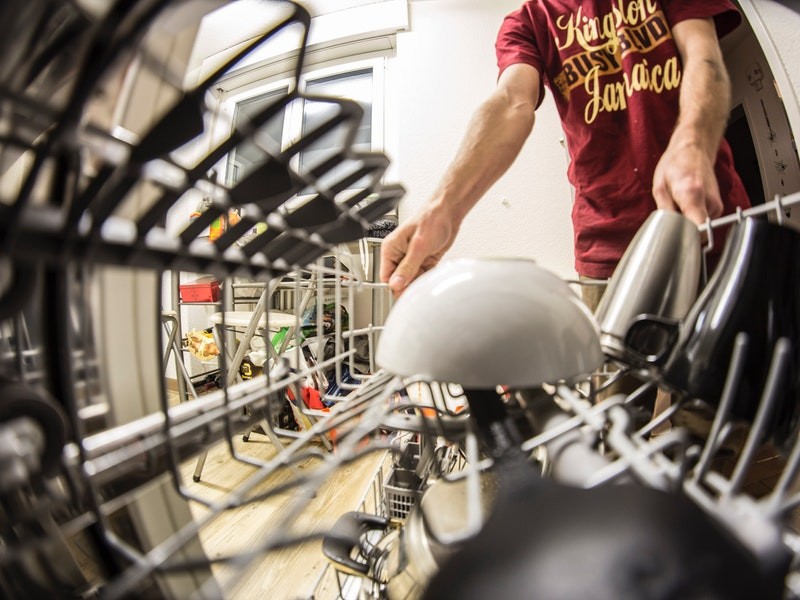Are you troubled by the standing water in your dishwasher? Are you wondering what to do? No one desires to have unsanitary conditions in an appliance that is supposed to clean dishes. Fortunately, most issues with a dishwasher are easy to fix and do not require professional assistance. You might not even have to replace any component to get the device up and running.
Dishwasher with standing water
A dishwasher is a very advantageous machine. According to some experts, you save about 230 hours a year through delegating dishwashing duties to one. The appliance is friendly to the environment and can help you find extra time for yourself in a day. Some advocates even argue that a dishwasher can use energy and water more efficiently than a human being.
If there is any reason why you can’t use your dishwasher you might be upset and rightly so. Some impediments like standing water are more common than others for this appliance. Since water can quickly turn into a breeding ground for bacteria and mold, you should take action swiftly. There is no room for compromises when it comes to hygiene. Therefore, it is in your best interests to do something about such a situation.
Precautions you should take
Dishwashers are electrical appliances, so it is necessary to take some precautions. Before you deal with the machine or attempt to troubleshoot, make sure it is unplugged from the electric port. Amongst the US workforce, 300 deaths and 4000 injuries occur every year due to electrical hazards. Your life is precious, and it makes no sense to risk it due to carelessness.
Food debris might be the culprit
There are several reasons why a dishwasher might have standing water. If you can figure out the problem, solving it is usually not that difficult. Only a few situations create the need for professional assistance.
Usually, standing water appears in a dishwasher when food debris clogs the drainage system. Removing the obstructions from the appliance is simple. You need to open up the dishwasher, remove the stagnating water, and remove the spraying arm. If you notice any residue of food particles on the screen, clean it as thoroughly as you can.
The next step is removing the screen. To locate the pressure lock, look at the place where the sprayer arm is attached. Once you rotate it, removing the screen will be a piece of cake. Examine the appliance and if you see any signs of some mold or slime, clean it. In most cases, removing the debris is enough to fix the issue and bring the dishwasher back in running condition.
Once you put the parts of the dishwasher back in place, run an empty cycle. You will most probably be able to rely on the machine for any further dishwashing. Normally, leftover food should be pulverized by the dishwasher before it goes down the drain. According to Consumer Reports’ Deputy Home Editor, a funky odor coming from the dishwasher means that the filter needs cleaning.
Why is there still standing water in my appliance?
There may be other reasons why a dishwasher has standing water. Nevertheless, removing food debris is always the first step.
There might be a stuck drain valve which is hindering water flow. Most individuals have no clue where to find the drain valve. It is usually present at the bottom of the dishwasher. You can even search online to figure out where the drain valve is present in your appliance. It is an essential part of the dishwasher as it opens and closes to allow the water to pass through.
To eradicate the nuisance of standing water, you have to understand your machine. Once you find the drain valve, make sure it can move around without much ado. It should not be stiff. You may need to lubricate the lever and remove debris blocking the valve. If it still doesn’t work, you may need to replace it.
If there is an awkward noise coming out from your dishwasher when it operates, the pump may be to blame. The pump is located below the rack, and if there is something wrong with it, water stops draining. Typically, there are two pump impellers, and one of them is responsible for cleaning the dishwasher after every cycle. Fixing a broken impeller is very challenging, so you might have to replace the pump.
Clogging in the main supply lines of your plumbing could also be the cause of standing water. If you suspect a significant plumbing issue, hiring a professional may be your best bet.
Replace a part
If you need to replace any part of the dishwasher, make sure you pay attention to the model and the make. Any component that you install in your appliance should be compatible with it. If you have a Whirlpool machine, only rely on Whirlpool parts. You can find several online tutorials which will guide you on how to install the components in your dishwasher.
If you are unable to eliminate the issue and you suspect a significant problem with the dishwasher, call a professional. You deserve a dishwasher that does not leave any standing water after a cycle.
Final thoughts
The existence of standing water in a dishwasher is troublesome. In today’s technological age, we rely on our appliances to make life easier. When you realize there is something wrong with an essential appliance like dishwasher, you may be upset. Luckily, fixing the dishwasher is usually not challenging. All you need to do is eradicate food debris from the appliance and make sure parts like the drain valve and pump impellers are functioning. If you still can’t fix it, maybe you need professional assistance.
About the Author
About Michelle Joe: Michelle Joe is a blogger by choice. She loves to discover the world around her. She likes to share her discoveries, experiences, and express herself through her blogs. You can find her on Twitter, LinkedIn, Facebook





